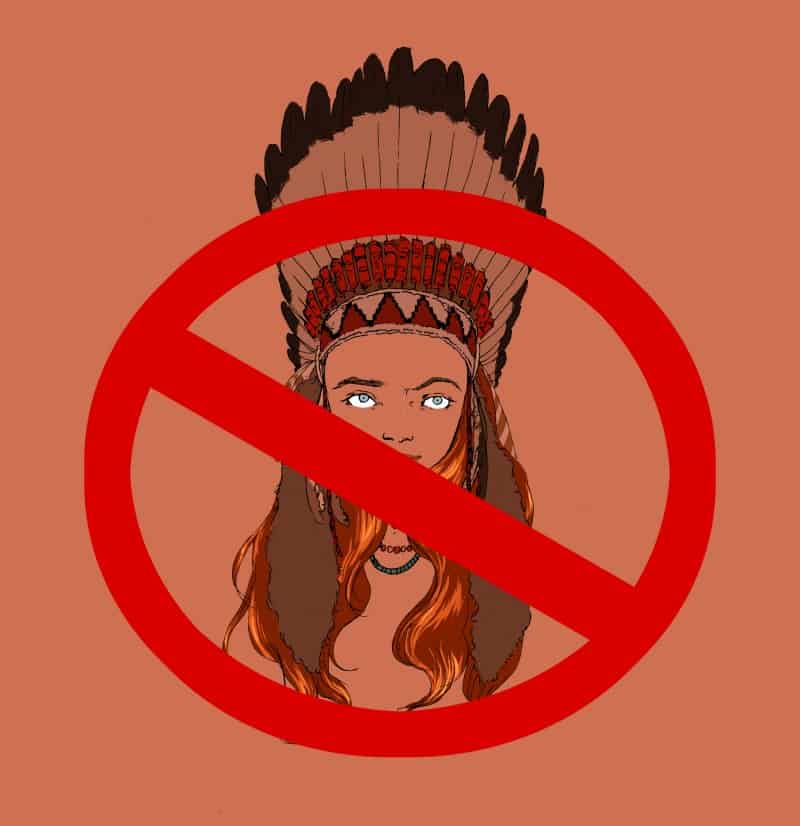[dropcap]The[/dropcap] concept of cultural appropriation frequents many student debates and university campuses. Take, for instance, how Western University’s organizing committee for orientation week recently “banned the wearing of cultural symbols, such as dreadlock wigs, hijabs, turbans, or Aboriginal headdresses, as long as they are not a part of the student’s daily cultural expression.”
This is a clear attempt to prevent cultural appropriation — that is, when those of a dominant cultural group selectively use, practice, or wear pieces of another, often marginalized culture, in a way that is decontextualized from its roots and in turn, often deemed offensive.
Some may insist this is merely cultural appreciation. Others may argue that choice of fashion or certain lifestyle habits are rather innocuous, and it would be unfair to police such personal and artistic expression. We need to consider, however, exactly how cultural appropriation manifests itself, and why it is harmful.
When I say ‘twerking,’ do you think ‘joyous dance from black culture originating from Cote d’Ivoire,’ or ‘Miley Cyrus?’ The fact that most followers of pop culture would choose the latter answer exemplifies how cultural appropriation unfortunately reassigns creative credit to ‘outsiders.’ This is not so much appreciation as it is the whitewashing of history or theft.
Not only do outsiders benefit from activities, or styles, they did not create, but they avoid the prejudice that is typically associated with those activities and memberships. Non-indigenous outsiders who wear Native American war bonnets as costumes, for example, can take their headdresses off whenever they choose. Whereas for some First Nations, the headdress, an item often associated with negative stigmas, is an indivisible part of their identity.
The worst offenders of cultural appropriation rarely take the time to understand and respect the significance behind certain garments or practices. “Headdresses are something that has to be earned,” explains Cherokee Nation member Adrienne Keene. “That’s completely lost when it’s this chicken-feather thing that you bought at a costume shop. That deep sacred meaning is eclipsed by the desire to just dress up and play Indian.”
This is not to mention that outsiders who appropriate different cultures often fail to comment on or even acknowledge the struggles that are associated with the cultures they are purporting to embrace and appreciate. When was the last time you heard Miley Cyrus make a statement about police brutality against unarmed black people, despite the fact she wanted the latest album to be something that “feels black?”
When we capitalize on elements of other people’s cultures, without their permission, or due respect, we are telling those people that our needs come before their humanity. By wearing a part of someone else’s identity as a costume, we are telling that person that they have no right to their own creations, and that their racial, religious, and cultural identities are more or less meaningless.
Pragmatists may point out that there isn’t an exact line of what constitutes cultural appropriation — are we allowed to eat at an Italian or Chinese restaurant without being Italian or Chinese? Take a yoga workshop without being Indian? Wear moccasins without being Aboriginal?
A lack of clean-cut answers, however, does not negate the principle of respect we should hold for other cultures. Indeed, such cultural exchange has been incredibly important to the development of our modern, interconnected world. As such, it is necessary for us to engage in positive exchange as opposed to appropriation; this will only occur with constant reflection and consultation with the groups that are most negatively affected.
As students at a multicultural university, we have ample opportunity to learn about, and appreciate, other cultures in a legitimately equitable setting. We just need to ensure that we are being inviting and not imposing; sharing, not simply taking; understanding and contextualizing, not stereotyping.
This is especially important given that Halloween is coming up, and given that year after year we witness many individuals appropriating cultural garments as fun disguises. An outfit that reduces a culture into a costume is simply inappropriate.
Perhaps most importantly is that if you are ever called out by your peers for appropriating a culture, even if you had no intention of causing harm, listen to them and make an effort to be well-informed. It’s an understandable mistake given the blurred lines surrounding this issue, but use it as a learning opportunity instead of getting defensive.
Adina Heisler is a first-year student at University College studying humanities.


